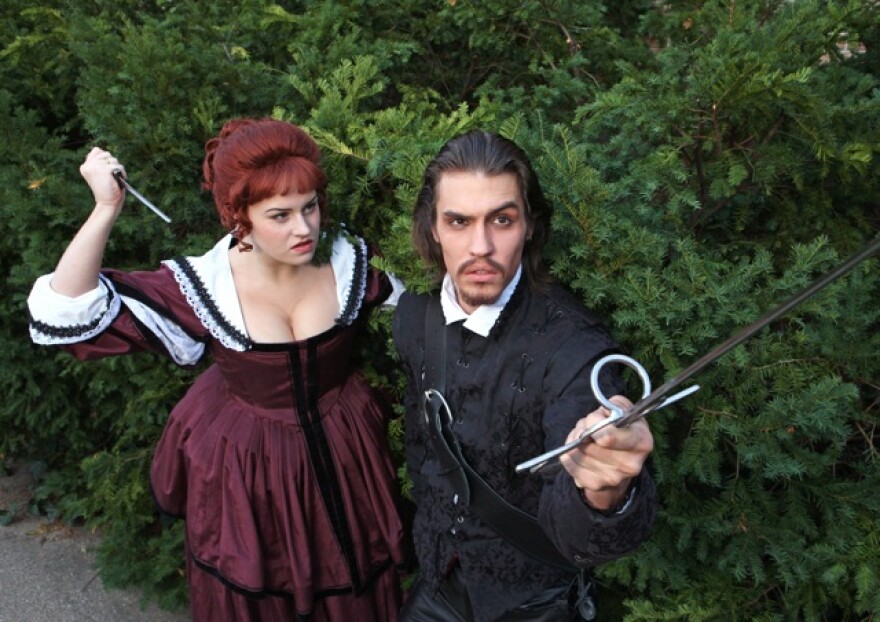In the story of The Three Musketeers, a brash young man named D’Artagnan tries to prove himself worthy of becoming a musketeer. Yesterday was opening night for the Western Michigan University Theatre’s performance of The Three Musketeers.
Director D. Terry Williams explains what a 17th century French musketeer was:
“Sort of like the Navy Seals of today. They’re the elite soldiers and they were created to protect the royalty,” Williams says.
Williams says the play is a melodrama, or "music drama," which means music sets the mood for each scene. He says melodrama gets a bad rap for being overly dramatic, but he says 19th century melodramas were more about spectacle.
“They would line the orchestra pits in theatres with tin and fill them with water, so they would have the heroine drowning and the hero diving in to save her,” says Williams. “They would have treadmills embedded in the stage floor so they could have horses—real horses—having horse races on stage.”
And with a swashbuckling sword fight in every other scene, this play is full of spectacle. Fight captain Michael Hyatt runs through all the stage fights to make sure the actors remember the choreography and stay safe.
Rebecca Thiele: “So the swords are real?” Michael Hyatt: “The swords are real, yes. They are reenactment blades, they aren’t as sharp as real swords—the edges aren’t sharpened—but it would puncture through you just the same.”
Hyatt says fight choreographer Nate Mitchell put a lot of effort into making these fights look realistic.
“You don’t want to have the audience thinking, ‘Why didn’t he just stab him there or cut him there?'" says Hyatt. "So you have to be very aware of, ‘Ok. In a real fight, how would this person attack?’ And transfer that into stage combat, making it safe for both people involved.”
Actress Arti Ishak says she and about five other actors are training to become certified actor combatants.
“It’ll help you in future jobs, like if I go out for a show or a movie," she says. "Like maybe Pirates of the Caribbean 5, you know, they don’t have to train me as much because I’m certified.”
Ishak plays Sabine, a character playwright Ken Ludwig added to the original story. She’s D’Artagnan’s tomboyish sister who would rather become a musketeer than go to a convent like she’s been told. Ishak and the other actresses have the added challenge of sword fighting in heels, petticoats, and corsets.

But The Three Musketeers isn’t all about swordplay; a lot of it is about intrigue. Arch-villain Cardinal Richelieu and his hench-woman Milady de Winter are especially two-faced as they plot King Louis’ demise.
"I actually have to embody an entirely different person in a couple of the scenes," says Ellen Jenders who plays Milady de Winter. "I pretend to be the Cardinal’s niece. There’s a whole different wig and different voice that I use. It’s just really interesting and kind of fun to be so conniving and so sweet to these people that I end up just wanting to destroy in the end.”
But maybe the most important part of the play is about learning what it means to become like your heroes. Actor Sean Buckley talks about how his character, D’Artagnan, changes throughout the play.
"The first fight he gets in, he fights Rochefort because Rochefort has insulted the color of his horse. So it’s a pretty ridiculous reason to fight somebody. But he kind of grows up a little bit. Later on, one of the musketeers insults his horse and he kind of lets it go. He’s learned his lesson that there are reasons to fight and there are other times where you just have to swallow your pride and move on.”
You can see The Three Musketeers on weekends through October 21st at 8 p.m. in Western Michigan University’s Shaw Theatre.




